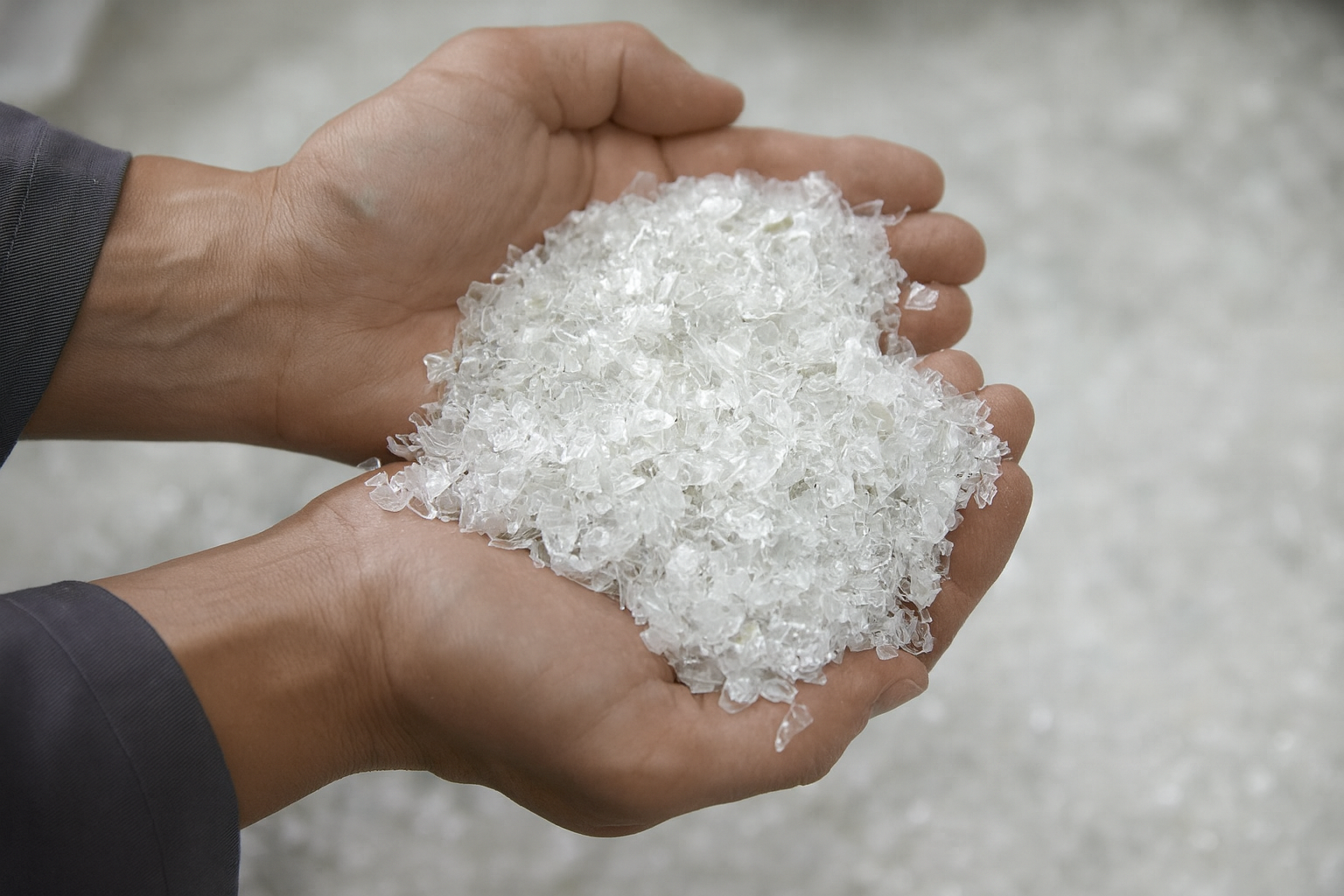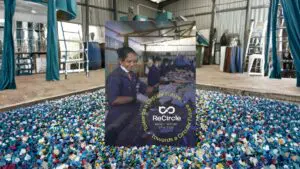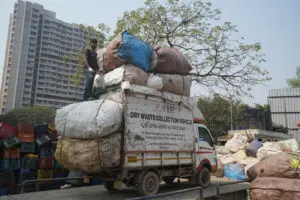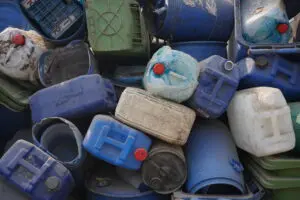The world is drowning in plastic continuously. From soda bottles to biscuit trays to chip packets and what not, packaging has become a convenience-first solution that forgot to look back.
But the story is shifting.
Thanks to better systems, bolder innovation, and a new wave of conscious businesses, waste isn’t just waste anymore. It’s a resource waiting to be recovered, reused, and respected.
At the centre of this circular shift? rPET flakes.
This isn’t some jargon-laced industry trend. This is about solving the plastic crisis with real, tangible solutions. And today, we’re unpacking how ReCircle rPET flakes are quietly powering a future where packaging doesn’t come at the planet’s expense.
What Are rPET Flakes?
rPET stands for Recycled Polyethylene Terephthalate, the stuff plastic bottles are made of. When used bottles are collected, cleaned, and shredded, you get rPET flakes. They’re small, flat pieces of post-consumer plastic that still have plenty of life left in them.
You’ll find them at the beginning of a second life cycle, reborn into packaging, textiles, automotive parts, or even new bottles. In many ways, these humble flakes are the raw currency of circularity.
How Are rPET Flakes Made?
Here’s what most people don’t see, the journey behind a single flake. It starts at the bin, but doesn’t end there.
1. Collection
Plastic bottles, also known as post-consumer PET bottles, are collected from various sources like waste pickers, community collection drives, and bulk waste generators, and then sent to Material Recovery Facilities (MRFs) for further processing.
2. Sorting
PET is separated from other plastics and non-recyclables. Sorting is done manually or with tech like near-infrared scanners.
3. Pre-Washing
The bottles are hot-washed to remove dirt, residual liquids, adhesives, and labels. During this step, caps and rings, typically made of different plastics like HDPE or PP, are also separated to maintain material purity. This process is essential to ensure the resulting flakes are clean, safe, and suitable for high-grade applications, including food-grade packaging.
4. Shredding
The clean PET is fed into grinders and shredded into flakes, uniform in size, but variable in colour depending on the input.
- Post-Hot Washing & Float-Sink Separation
After shredding, the flakes undergo another round of hot washing, this time with caustic soda or industrial detergents, to eliminate any remaining glue, food residues, and organic contaminants. Next, float-sink separation tanks are used to sort materials by density: PET flakes sink, while lighter plastics like HDPE, PP, and PVC from caps and labels float. This ensures a higher purity of PET material.
- Drying
The cleaned PET flakes are thoroughly dried to eliminate moisture, which is critical for downstream processing and to maintain material integrity.
- Testing
Finally, the flakes are tested for key quality parameters such as intrinsic viscosity (IV), colour, presence of contaminants, and heavy metals. This step ensures they meet industry standards before being reused or converted into rPET granules for more advanced applications.
Every step in this journey reflects a choice: to transform what we throw away into something that can be used again, and again.
Flakes vs Granules: What’s the Difference?
Both rPET flakes and rPET granules are forms of recycled plastic, but they actually serve different purposes, lets see how:
- Flakes are typically used for fibres, sheets, and thermoformed products (like trays and blister packs).
- Granules (also called pellets) are created by melting flakes and reprocessing them. They’re used where higher precision or extrusion strength is required like bottle preforms, films, or even injection-moulded parts.
You can think of flakes as chopped raw vegetables, and granules as cooked, refined ingredients. Same source. Different stages. Different dishes.
Why rPET Flakes Matter More Than Ever
The packaging industry is under pressure, from regulators, consumers, and the climate. Here’s why rPET flakes are more than just a compliance box.
1. They Close the Loop
Instead of one-and-done use, rPET enables plastic to stay in circulation. That’s good news for both the planet and supply chains.
2. They Cut Carbon
Producing rPET consumes less water and up to 79% less energy compared to virgin plastic. That means fewer emissions, without compromising utility.
3. They Boost Brand Trust
In today’s market, people are watching labels. Using ReCircle rPET flakes in packaging signals intent, transparency, and credibility, values consumers increasingly vote for with their wallet.
4. They Future-Proof Your Business
India’s Extended Producer Responsibility (EPR) mandates are tightening. rPET is a scalable way for businesses to stay ahead of regulation without waiting for last-minute scrambles.
Where Do rPET Flakes Go?
They go where you don’t expect.
- Bottles – Yes, even Coca-Cola and Bisleri use recycled PET in their bottles.
- Clothing – A single T-shirt made from recycled polyester can use up to 10 PET bottles.
- Electronics Packaging – Thermoformed trays and casings.
- Automotive – Seat padding, insulation, door liners.
- Furniture & Homeware – CarPETs, cushions, planters.
The beauty lies in their flexibility. rPET flakes don’t just reduce waste, they unlock new design possibilities across industries.
Challenges You Should Know About
It would be unfair to only talk about the upsides. Like any material, rPET has its limits, but knowing them is the first step to working smarter.
- Contamination: The biggest enemy of recycled plastic is a dirty input stream. If PET is mixed with other plastics, the yield suffers.
- Flake Quality: Inconsistent sourcing and poor washing can reduce the strength and clarity of the final product.
- Supply Chain Gaps: While metros may have better infrastructure, tier 2 and 3 cities are still catching up.
- Costs: rPET isn’t always cheaper than virgin plastic, especially when oil prices dip. But the long-term gains often outweigh short-term costs.
What Makes ReCircle rPET Flakes Different?
It comes down to traceability and ethics. Here’s why ReCircle’s model stands out:
- Tech-enabled Transparency: Every flake can be traced back to its origin through their tech-platform-ClimaOne
- People-Powered Supply Chains: Waste isn’t recovered anonymously. Its done by trained, insured Safai Saathis who’ve seen their income grow and their dignity restored.
- ReCircle’s Philosophy: The flakes aren’t just recycled, they’re recovered responsibly, sorted ethically, and tested thoroughly.
Is rPET the Future of Packaging?
It’s not the future. It is the present. The question is, will you be part of it?
Governments are nudging. Consumers are asking. The planet is begging. And rPET flakes are quietly doing the work in the background.
Whether you’re a food brand, a D2C startup, or a manufacturer trying to reduce your footprint, this isn’t a fringe solution. It’s a viable, scalable material choice.
And if you want to go beyond checkboxes and actually walk the talk on sustainability, you’ll want a partner who doesn’t just talk circular, they build it, one flake at a time.
Ready to Rethink Plastic?
If you’re looking to move away from linear packaging and step into a system where every bottle has a backstory, start with ReCircle rPET flakes.
We’ve found something cool in your trash. Let’s turn it into something even cooler.
Visit recircle.com to learn more.




